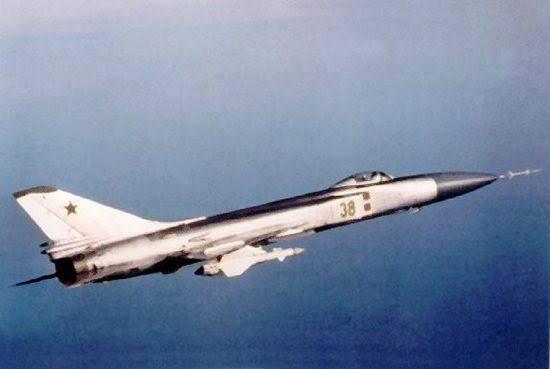✈️ Sukhoi Su-15 “Flagon” — Review
🧩 Overview
The Sukhoi Su-15, NATO codename “Flagon”, was a Soviet supersonic interceptor built to protect Soviet airspace during the height of the Cold War. It served from 1967 until the early 1990s, and its primary mission was clear: detect, intercept, and destroy high-speed intruders like American bombers or reconnaissance aircraft.
Though it was never exported, it was widely used across the Soviet Union and stationed at key points along the USSR’s vast border.
⚙️ Specifications
-
First flight: May 30, 1962
-
Entered service: 1967
-
Crew: 1
-
Length: 22.03 m (72.3 ft)
-
Wingspan: 9.34 m (30.6 ft)
-
Engines: 2 × Tumansky R-11 or R-13 turbojets
-
Top speed: ~2,230 km/h (Mach 2.1)
-
Range: ~1,600 km (with drop tanks)
-
Service ceiling: ~18,000+ meters (59,000+ ft)
-
Armament: 2–4 air-to-air missiles (R-8, later R-60 or R-98)
-
Radar: Powerful airborne interception radar (later versions had look-down/shoot-down capability)
🛠 Design Features
-
Twin-engine layout for high speed and redundancy
-
Blended wing design with sharply swept delta-style wings
-
No internal cannon — it was built purely for missile interception
-
Early versions had nose intakes, but later ones had side intakes to accommodate radar in the nose cone
The Su-15 prioritized speed and climb rate over maneuverability — ideal for quick vertical intercepts from Soviet airbases.
🛡️ Role & Use
The Su-15’s primary job was to intercept and destroy NATO aircraft trying to probe or penetrate Soviet airspace. It was scrambled hundreds of times during Cold War air defense missions and was often the first responder to border violations.
Its most infamous moment came on September 1, 1983, when an Su-15 shot down Korean Air Lines Flight 007, a civilian Boeing 747 that had strayed into restricted Soviet airspace. All 269 people onboard were killed, marking one of the Cold War’s darkest aviation incidents.
🧱 Strengths
-
High-speed performance — over Mach 2
-
Excellent climb rate and intercept range
-
Reliable radar for its era, especially in later variants
-
Served effectively for nearly three decades
⚠️ Weaknesses
-
No internal gun, making it helpless in close dogfights
-
Limited maneuverability — not suitable for air superiority
-
Short range, without drop tanks
-
Poor situational awareness and outdated systems by the 1980s
📜 Legacy
The Su-15 was never exported and remained a strictly Soviet weapon, guarding the skies with ruthless efficiency. It represents a generation of Cold War aircraft designed for function, not flair — fast, cold, and built for one purpose: interception.
It was eventually replaced by more modern and versatile fighters like the Su-27 “Flanker”, but the Flagon’s reputation endures — both as a product of its time and a symbol of how tense the skies could be during the Cold War.
🏁 Final Verdict:
| Category | Rating (★ out of 5) |
|---|---|
| Speed | ★★★★★ |
| Climb/Intercept | ★★★★★ |
| Maneuverability | ★★☆☆☆ |
| Tech (for its time) | ★★★☆☆ |
| Combat Utility | ★★★☆☆ |
| Cold War Icon | ★★★★☆ |

Comments are closed